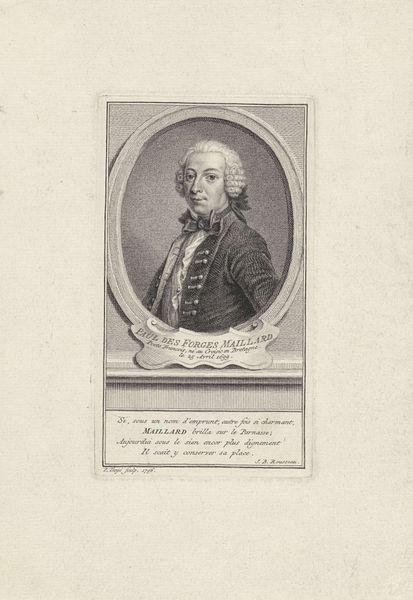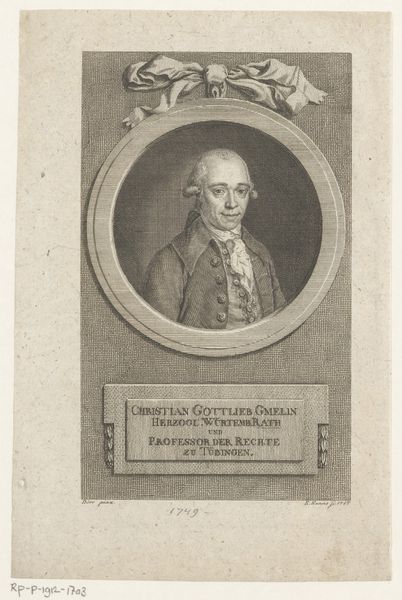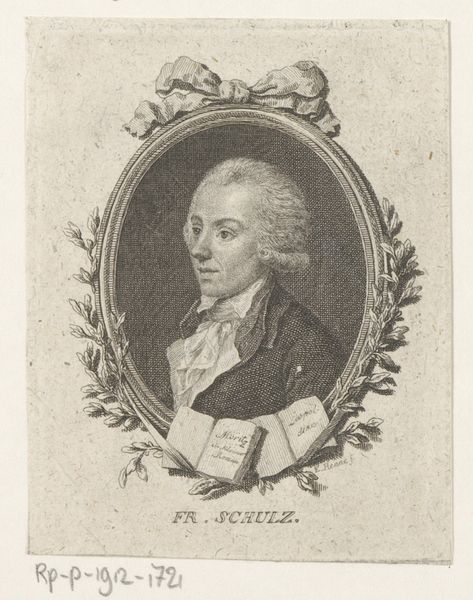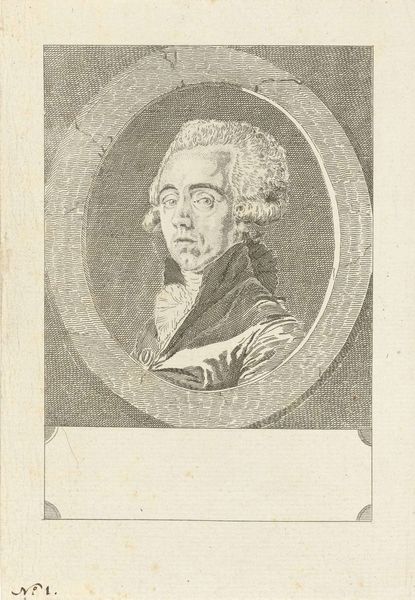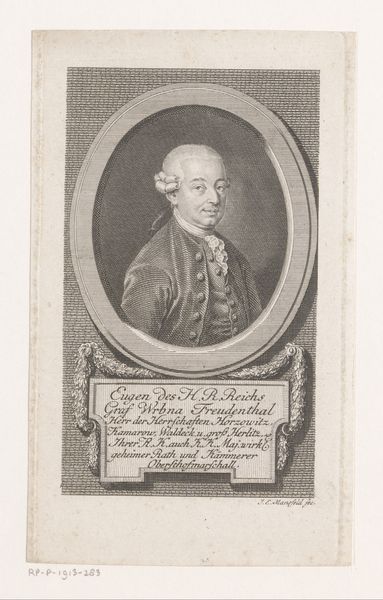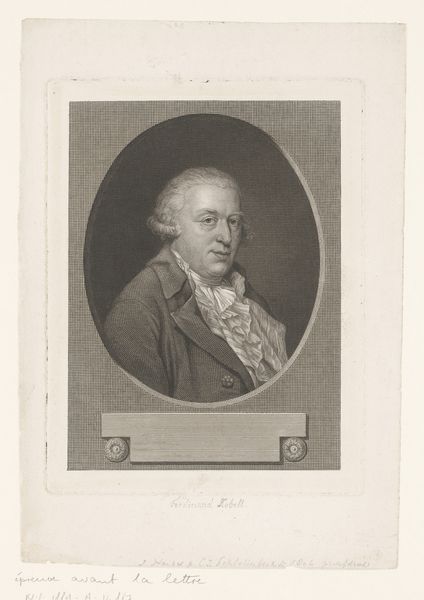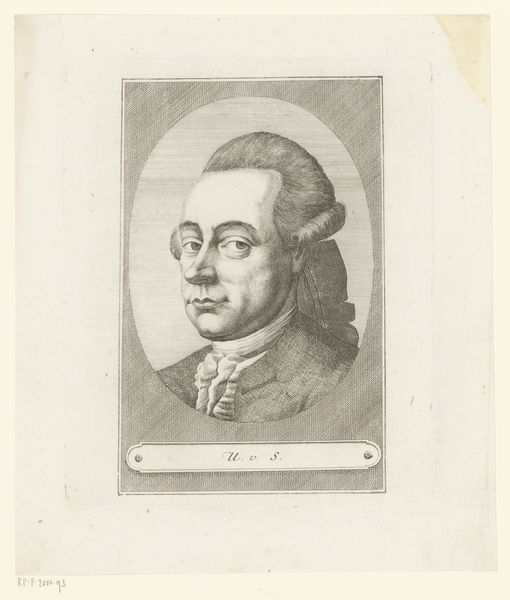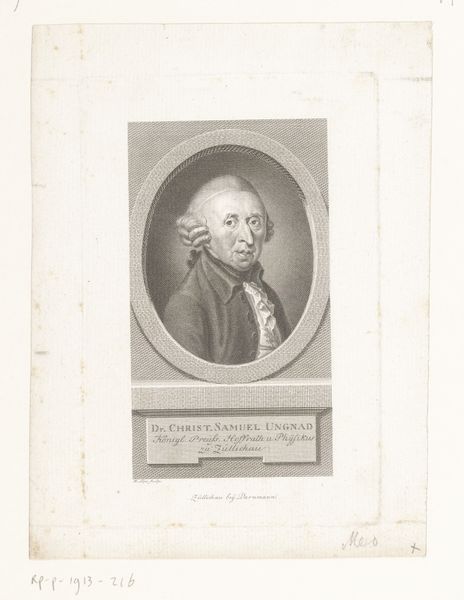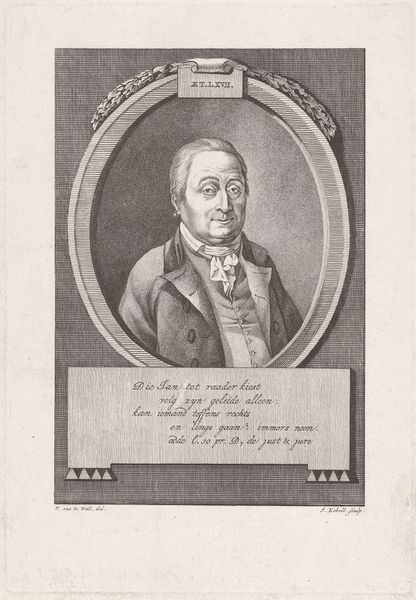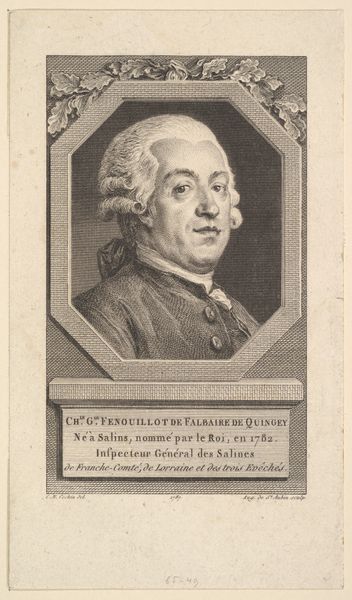
print, engraving
#
portrait
#
aged paper
#
16_19th-century
#
neoclassicism
# print
#
old engraving style
#
19th century
#
line
#
engraving
Dimensions: 80 mm (None) x 67 mm (None) (billedmaal), 151 mm (height) x 102 mm (width) (plademaal)
Editor: This engraving from sometime between 1767 and 1824 depicts Christian Friis Rottbøll, created by Andreas Flint and preserved at the SMK. There's a formality, but also a slight sense of weariness in his expression, wouldn't you say? How do you read the symbolism in a piece like this? Curator: The engraving captures Rottbøll, likely posthumously given the dates provided beneath his name, and the engraving process itself suggests something about remembrance. Consider the Neoclassical style—the restrained emotion, the idealized form within that oval. Do you see how that oval *frames* him, setting him apart from the everyday world, almost enshrining him? Editor: Yes, it's very deliberate. It's not just a portrait, it's an…icon? Curator: Precisely. Notice how the lines are so precisely rendered. In engraving, the line itself is a powerful symbol – a mark of permanence, of considered thought. Each stroke carefully etched, almost a memorial act. It also speaks to the era, of course, with its scientific inquiry and rationalism - all represented through the very calculated line. What does the powdered wig signify to you? Editor: Status, certainly. Maybe even intellectual standing, connecting him to other figures of the Enlightenment. Curator: And isn't it fascinating how these visual cues - the wig, the clothing, even the style of engraving itself – collectively build an image, conveying layers of meaning about not only the individual, but the era he inhabited? A cultural memory etched in ink. Editor: That’s a totally different lens for me; looking at portraiture not as capturing likeness but as an intricate web of encoded symbols. Curator: Indeed. Images carry emotional and cultural weight across time. By analyzing symbols like these we can reveal enduring aspects of visual communication.
Comments
No comments
Be the first to comment and join the conversation on the ultimate creative platform.
